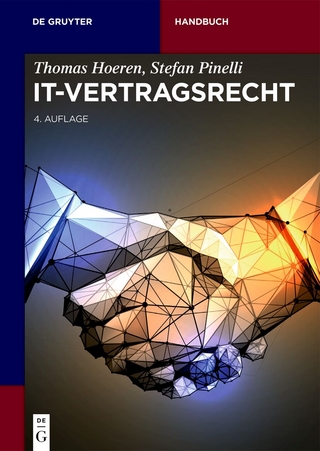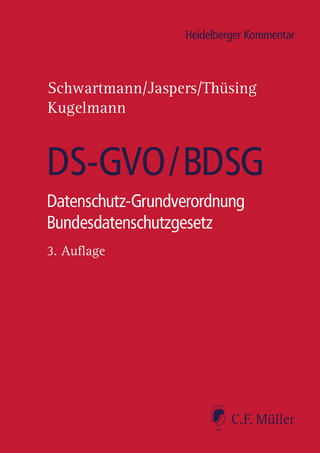
Property Aspects of Intellectual Property
Cambridge University Press (Verlag)
978-1-107-07205-3 (ISBN)
For many years, there have been discussions about whether intellectual property (IP) is really property. The property concept, particularly when used in transnational and international concepts, remains somewhat elusive. Here, Ole-Andreas Rognstad comprehensively discusses the use of the property metaphor in relation to IP in a transnational perspective. Rognstad gives an overview of main aspects of the IP/property interface, notably the justification and the structuring of the rights and intellectual property rights as assets. Moreover, he highlights the importance of distinguishing between these aspects, even though they are closely linked to each other. The book takes a transnational approach, dealing with recent developments in European human/fundamental rights law and international investment law, helping readers to understand the practical implications of the IP/property interface. This will be valuable reading for academics, practitioners and policy makers working in the area of IP, and lawyers and philosophers interested in the property debate.
Ole-Andreas Rognstad is a Professor at the Department of Private Law in the Universitetet i Oslo, Norway.
Part I. Introduction: Part 1. Three Property Aspects of IP Law; Part II. Property in Justifying Rights: Introduction: A. Utilitarian Justification Grounds: 1. The tragedy of the commons vs. the tragedy of the free rider; 2. Trademarks and trade secrets; 3. Costs vs. benefits; 4. The doctrine of property vs. liability (and inalienability) rules; 5. The notion of modularity in property law; B. The Labor Idea: 1. Locke and the notion of 'moral desert'; 2. Alternative readings of Locke; 3. The 'labor idea' as a justification for modern IP; C. Personality and Personhood Ideas: D. Other Ideas: Part III. Property in the Structuring of Rights: Introduction: A. The role of 'Thingness' in Property; B. The Notion of IP as 'INTANGIBLES': 1. General Remarks; 2. Revealing the Nature of 'Intangible IP': The Scandinavian Post-WWII Discussion and Beyond; C. The Structural Particularities of Various IP Rights; D. The Object Function in IP Law – Distinction Between 'concrete object' and 'legal object' (Rights in REM); E. IP as 'Monopolies'?; F. The Concepts of 'resource' and 'information' in Relation to IP: 1 The concept of 'resource' in relation to IP; 2. The concept of 'information' in relation to IP; G. Exclusive Rights and Remuneration Rights in IP Law; H. Conclusion – on Property in the Structuring of Rights: Part IV. Property as Assets: Part II. Implications of the Three Aspects of Property: Part V. Conclusions to be Drawn from the Justification of Rights: Introduction: A. Conclusions Drawn from Common Grounds of Justification: 1. Utilitarian grounds; 2. Labor idea; 3. Personality ideas; B. Problems with Different Justification Grounds; C. Justifying IP in the International Context; D. Conclusion; Part VI. Conclusions to be Drawn from the Structure of Rights: Introduction: A. The Relation between Justification and Structure; B. 'IP Boundaries'; C. Abstraction Levels in IP Law: 1. General remarks; 2. Abstraction levels in copyright; 3. Abstraction levels in patent law; 4. Abstraction levels in trademark/trade names law; D. The Concept of 'Use'/'Exploitation' of IP Law – in Particular in Relation to Copyright: 1. Outline; 2. Problems relating to exploitation rights in copyright; 3 Conclusion; E. Conclusions on IP as 'objects'; Part VII. Conclusions to be Drawn from IPRs as Assets: A. Alienability vs. Inalienability of IPRs; B. Transfers and Securitazation of IPRs – The Impact of the 'NATURE' of the 'Legal object'; C. The Interface between the Transfer of IPRs and the Transfer of Copies of IP-Protected Subject Matter; D. 'Takings'/Expropriation of IPRs: 1. Introduction; 2. IPRs as protected subject matter under expropriation/takings rules; 3. What rights are protected against expropriation/'takings'? – the right to exclude or also the right (privilege) to 'use'?; 4. What constitutes an (unlawful) expropriation/'taking' of IPRs; 5. Conclusions; E. IPRs as Property in Assets vs. Other Fundamental Rights: 1. Introduction; 2. CJEU case law on IP as property vs. other fundamental rights; 3. ECtHR on the 'balancing paradigm'; 4. Discussion; F. Conclusions on IPRS as Assets; Part VIII. Final Conclusions.
| Erscheinungsdatum | 27.08.2018 |
|---|---|
| Reihe/Serie | Cambridge Intellectual Property and Information Law |
| Verlagsort | Cambridge |
| Sprache | englisch |
| Maße | 158 x 235 mm |
| Gewicht | 480 g |
| Themenwelt | Recht / Steuern ► EU / Internationales Recht |
| Recht / Steuern ► Privatrecht / Bürgerliches Recht ► IT-Recht | |
| Recht / Steuern ► Privatrecht / Bürgerliches Recht ► Medienrecht | |
| Recht / Steuern ► Privatrecht / Bürgerliches Recht ► Sachenrecht | |
| Recht / Steuern ► Wirtschaftsrecht ► Urheberrecht | |
| ISBN-10 | 1-107-07205-0 / 1107072050 |
| ISBN-13 | 978-1-107-07205-3 / 9781107072053 |
| Zustand | Neuware |
| Haben Sie eine Frage zum Produkt? |
aus dem Bereich


